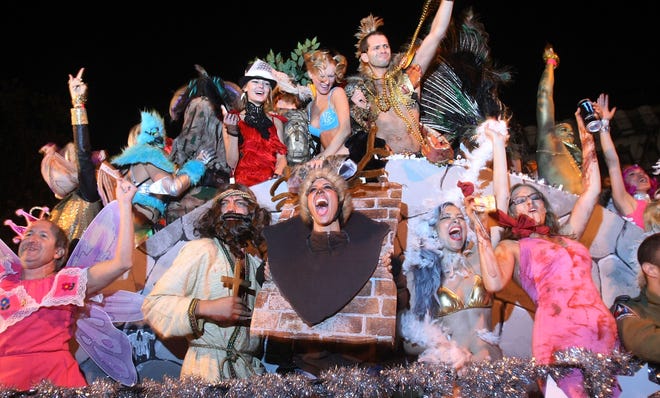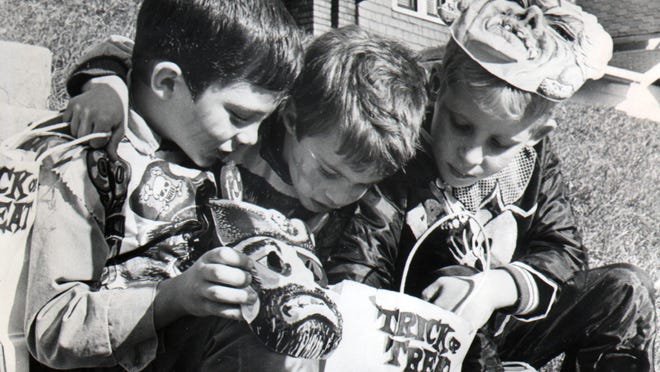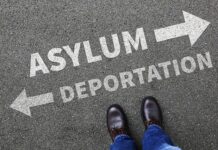
“This Halloween is something to be sure …”
— Lou Reed, “Halloween Parade” (1989)
Jeanne Fleming, artistic/producing director of New York City’s Village Halloween Parade, is marking her 40th year with the parade in 2021. Across the decades, the parade has only been canceled twice — in 2012, following the devastation of superstorm Sandy, and in 2020, due to the COVID-19 pandemic.
But this year, the parade needs the public’s help to make its resurrection a reality.
“Normally, we would have all of our grants, all of our sponsorships, all of the people who support us, all of the people in the parade, that would all be ready by now,” Fleming told the Asbury Park Press, part of the USA TODAY Network, on Wednesday.
►A Halloween to remember:Americans to spend record $10 billion on candy, costumes, decorations this year
►Face mask-friendly costumes:25 creative and fun Halloween ideas for kids
But, Fleming explained, organizers learned from the the city only a month ago that New York City’s 48th annual Village Halloween Parade was given the go-ahead.
Some sponsors have come on board, with the parade set to be presented by iHeart Media’s WKTU and Z100 radio stations, televised on NY1 and partially funded by a grant from the New York City Department of Cultural Affairs.
But organizers have until Tuesday, Oct. 5, to raise $150,000, and so they are seeking donations from the public at halloween-nyc.com/donate.
“We had to turn to the people who love the parade,” Fleming said.

“We are a small not-for-profit that is mostly run on volunteer help — we have 1,500 volunteers,” she said. “And now we depend on the support of lots of people or someone coming forward to say, ‘This is important to the city, it is for the public good, and I will take responsibility for it. I’ll contribute, I’ll make it happen.’”
As of Thursday afternoon, just over $7,600 in donations had been pledged. What will happen if the rest of the money can’t be raised?
“Then we won’t be able to do it,” Fleming said. “Because there are some expenses you just can’t get away from. The insurance is $35,000, and you just start there.”
What to expect this year
If it happens, the parade route is set to travel on 6th Avenue north of Spring Street to 16th Street from 7 to 10:30 p.m. on Sunday, Oct. 31, followed by the “Webster Hell” afterparty at Webster Hall In Manhattan’s East Village.
All Centers for Disease Control and Prevention guidelines for outdoor gatherings will be followed, and all patrons and spectators are asked to wear (creatively-decorated) masks.
With comedian Randy Rainbow set to serve as Grand Marshall and classic hip-hop trio Naughty by Nature and New York City’s Gay Men’s Chorus scheduled to perform, this year’s parade will march under the theme of “Let’s Play.”

“We realized that every year, what we’re doing is we’re playing in the streets,” said Fleming. “We’re dancing in the streets, we’re playing. And so we decided to celebrate that part of the parade and dedicate it to the kids of New York and sort of the kid in all of us to be able to play again with each other.”
Nearly 50 years on, the Village Halloween Parade doesn’t appeal to any one specific demographic — which both gives it its New York City spirit and makes fundraising a challenge.
“I’ve learned to call it an un-edited public statement,” Fleming said. “So you don’t know what will happen at it because we have the huge participation of tens of thousands of New Yorkers, usually in costumes of their own creation over which we have no control. It’s free in that sense, people can come and express themselves.
“So it makes it much harder to raise money for it because we can’t say our audience is white men between the ages of 30 and 40 or kids. We have all people, young people, gay people, straight people, all ethnicities. There are 37 different kinds of music in the parade. So it’s hard to identify exactly who it is and that’s of course one of its joys: It’s New York in all of its diversity, all of its complexity, all of its creativity. And I guess that’s why I’m still doing it after 40 years because it makes me happy.”
Alex Biese has been writing about art, entertainment, culture and news on a local and national level for more than 15 years.







